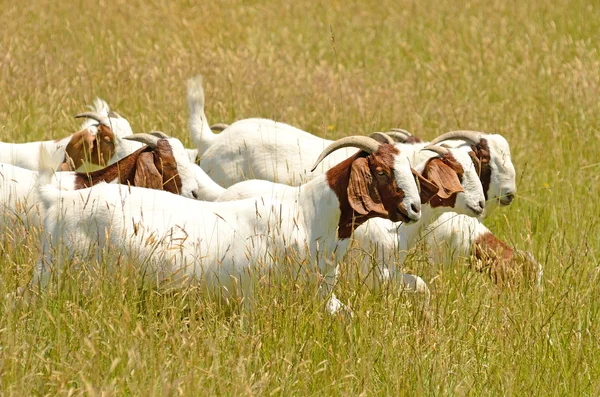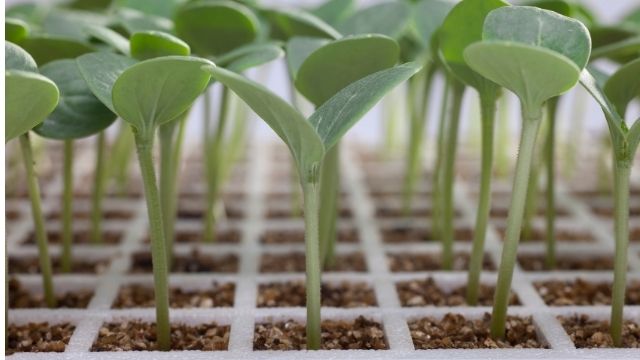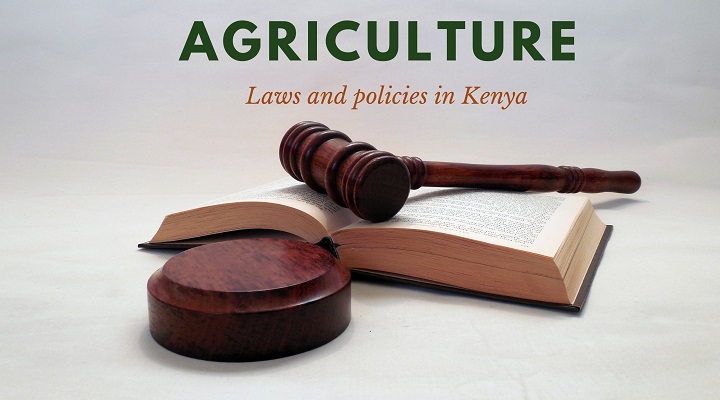Are you wondering how much money you can make rearing goats in Kenya for meat? In this blog post, we will estimate the profitability of the Boer goat breed in Kenya. You can use the same guide for making cost and benefits farm budgets for other profitable goat breeds. This includes breeds like Saanen, Kalahari, or British Alpine.
Commercial goat farming in Kenya is a very profitable agribusiness for livestock keepers. It’s expected to make more money as the demand for quality goat meat and milk grows. Goats are hardy animals suited to Kenya’s diverse weather conditions and terrains.
This step-by-step guide will cover the Boar meat goat breed’s climate requirements, breeding, and feeding. Besides, you will learn about the estimated costs and profits you will make.
TOC
- Facts about goat farming in Kenya
- Why Meat Goat Farming?
- What is the average price of a mature boar goat in Kenya?
- Which are the best areas to keep Boer goats in Kenya?
- How do you select the best Goat Breed for your Farm?
- Common Costs for Boer Goats Farming in Kenya
- How Profitable Is Boer Goat Farming in Kenya?
- Challenges and Risks
Facts about goat farming in Kenya
what do you know about goat production and consumption in Kenya? Below are some selected data and facts about goat farming in Kenya. This includes the latest goat milk prices and goat meat prices.
- According to the 2019 census, Kenya had 27.7 million goats, as of 2020, the goat stock reached 36 million heads
- The export value of Goat meat from Kenya was USD 46.11M, and the export volume was 10.58M metric tons in 2021.
- The Economic Survey 2022 reported that sheep and goats slaughtered 12,040.2 thousand heads in 2020 and 9,478.0 thousand in 2021.
- Goat meat price in Kenya starts from Ksh 600 per kg in most outlets. On the other hand, the wholesale chevron meat price in Kenya is Ksh 480 per kg in places like Kiamaiko.
- The average price of goat milk in Kenya is Ksh 200 per liter in 2024.
Why Meat Goat Farming?
Is rearing goats a good idea for you? You can keep them for reliable food production, income generation, or job creation goals. Here are the top 5 benefits of goat farming in Kenya. These benefits apply to urban farmers, hobbyists, pastoralists, or commercial animal keepers. Goat farming is advantageous compared to other livestock ventures.
- Multipurpose Livestock; You can raise goats for many benefits and products such as milk, meat, fiber, hides, and manure.
- Cheap; Goats are sometimes called the poor man’s cow. They are cheaper to care for, feed, and vaccinate than cattle. They can be kept by women, youth, the poor, landless, and marginalized farmers.
- Adaptability; unlike other livestock, goats perform well in all agroecological zones from the coast to Kenya’s highland areas.
- Profitability & Quality; Goat meat has no religious or cultural taboo and is relished by all sections of society. It also has less fat and is more in demand than beef and poultry meat. Finally,
- Organic Manure: Goat manure is 2.5 times richer in nitrogen and phosphoric acid than cow manure.
What is the average price of a mature boar goat in Kenya?
The key Income for a meat goat farmer is selling mature boar bucks and does. One can also sell breeding kids at premium prices. Goat farmers with value-addition investments can slaughter their goats and sell quality meat and offals. Another source of your goat farm revenues is selling products including goat manure, hides, skins, and goat horns.
A mature two-year-old Boer buck weighing about 100kg can fetch around Sh60,000 in Kenya. The average weight of a mature Boer buck is approximately 110-135 kg. A mature Boer doe in milk can vary, but a mature doe typically costs between $200 to $300 in Kenya. Additionally, young stock of five to 12 months old, whether does or bucks, can range between Sh30,000 and Sh50,000.
Which are the best areas to keep Boer goats in Kenya?
Generally, goats are adaptable to a wide range of climate zones in Kenya. Your farm can be ideal depending on the breed of goat you keep. It also depends on the production management system you choose. Some horny goat breeds, such as the Boer and the Gala goat, are well-suited for hot and dry climates.
Related: Is Dorper sheep farming in Kenya More Profitable in 2024?
Get a land near a town for easy access to the market, animal health products, and vets.
How do you select the best Goat Breed for your Farm?
The most common goat breeds in Kenya are the Boer, the Saanen, and the Alpine. These breeds are known for their high meat and milk production, as well as their resistance to diseases.
Boer goat farming in Kenya can be highly profitable due to the breed’s superior characteristics and high demand. Boer goats are known for their rapid weight gain and large size. They are also valued for quality meat production. These traits make them sought after in the market. Goat breeding can be done through both natural and artificial methods.
Artificial insemination is becoming increasingly popular among farmers. It leads to higher conception rates. It also improves genetics and reduces disease transmission.
Common Costs for Boer Goats Farming in Kenya
Wondering the money you will need to establish a profitable goat-farming business in Kenya? This Post will outline various costs you will incur to start and run your farm efficiently. Initial investment costs for goat farming in Kenya can vary. They depend on the scale of the operation and the equipment used. The main costs include land, breeding stock, equipment, and labor.
Land Acquisition & Fencing
In Kenya, the cost of acquiring land suitable for goat farming can vary depending on location and size. For a small-scale operation, you might consider leasing land initially to minimize upfront costs.
Install sturdy fencing around the farm to prevent goats from escaping and to protect them from predators. Fencing should be secure, free from sharp edges, and tall enough to prevent goats from jumping over.
Estimated Cost: Ksh 100,000 – Ksh 500,000 per acre, depending on location and land quality.
Shelter
Building appropriate housing for goats is crucial. It protects them from harsh weather conditions like heat, cold, wind, and rain. The shelter should be well-ventilated to prevent respiratory issues and should offer protection from drafts and predators.
- Ensure that the house facility has enough space for goats to move around comfortably. Each adult goat should have at least 15-20 square feet of indoor space.
- Consider dividing the housing facility into separate areas for different purposes. These can include kidding/lambing pens for births. Set up quarantine areas for new animals. Also, create areas for sick or injured goats.
- Use clean and dry bedding material, such as straw, wood shavings, or sand. This will provide a comfortable resting area for goats. Regularly clean and replace bedding to maintain hygiene and prevent health issues.
- Ensure adequate airflow. This will prevent the buildup of moisture, ammonia, and airborne pathogens. Such conditions can lead to respiratory issues in goats.
- Implement biosecurity measures to prevent the introduction and spread of diseases within the goat herd. This includes quarantine protocols for new animals, regular health monitoring, and limiting access to outsiders and other animals.
Estimated Cost: Ksh 50,000 – Ksh 200,000 for basic shelters and fencing for a small herd.
Purchase of Goats
The cost of acquiring goats will depend on factors such as breed, age, and quality. Opting for high-quality breeds known for meat or milk production can yield better returns.
Estimated Cost: Ksh 5,000 – Ksh 20,000 per goat, depending on breed and age.
Feeding and watering
Budgeting for goat feed is crucial to ensure proper nutrition for the animals. You can source locally available feed ingredients and supplements to keep costs manageable. Provide clean and fresh water at all times.
Your expenses will go to purchasing hay, grains, minerals, supplements, and other feed ingredients. These are necessary to meet the nutritional requirements of the goats. You will also have additional costs related to pasture maintenance. This includes seeding and fertilization. You will also need to implement rotational grazing practices to provide forage for the herd.
Estimated Cost: Ksh 10,000 – Ksh 30,000 per month for feed, depending on herd size and nutritional requirements.
Breeding and Reproduction
Investment in breeding stock, artificial insemination services, or stud fees is essential for the genetic improvement of the herd. Additionally, costs associated with reproduction management need to be considered. These include estrus synchronization, pregnancy testing, and ultrasound scans. Together, they can amount to approximately Ksh. 5,000 to Ksh. 20,000 per breeding cycle, depending on the services required.
Labor
If you require assistance in managing the farm, labor costs should be factored into the budget. Hiring local workers or engaging family members can help reduce expenses. Some money will go into wages for farm workers, herders, or hired help. They are involved in daily care, feeding, milking, breeding, and other farm activities. As the farm owner, remember to value the time spent on farm management. Appreciate the efforts in decision-making, record-keeping, and the overall operation of the goat farm.
Estimated Cost: Ksh 10,000 – Ksh 20,000 per month for labor wages.
Equipment & Supplies
Basic equipment such as feeding troughs, water troughs, and milking equipment (if applicable) will be necessary for day-to-day operations. The money will go to purchase, maintenance, and repair costs for the equipment.
In addition, you will need a consistent supply of bedding, feeders, and waterers. You also require fencing materials, grooming tools, and other supplies needed for goat care and management.
Estimated Cost: Ksh 20,000 – Ksh 50,000 for essential equipment, depending on herd size and farming practices.
Veterinary & Healthcare
Allocating funds for veterinary services, vaccinations, and medications is essential to maintain the health and well-being of the goats. Regular veterinary check-ups can prevent diseases and ensure optimal productivity. There are two key parts to this expense.
- Veterinary care: Expenses for routine health check-ups, vaccinations, deworming, hoof trimming, and treatment of illnesses or injuries.
- Medications: Costs of medications, vaccines, dewormers, and other healthcare products to maintain the health and well-being of the goats.
Estimated Cost: Ksh 5,000 – Ksh 10,000 per month for veterinary services and medications.
Utilities and Facilities
Providing utilities such as water and electricity is essential for the proper functioning of the farm. Costs associated with heating, lighting, ventilation, and waste management in housing facilities and barns need to be considered. Additionally, expenses for waste disposal, manure handling, composting, and environmental compliance measures should be accounted for. These expenses can amount to approximately Ksh. 10,000 to Ksh. 30,000 per month.
Marketing and Sales
Promoting and selling goat products such as meat, milk, cheese, fiber, or breeding stock incurs marketing and sales expenses. This includes costs for promotion, advertising, branding, sales commissions, and transportation for delivering animals to buyers. Marketing expenses can vary depending on the strategies employed but may range from around Ksh. 10,000 to Ksh. 50,000 or more per month.
Insurance and Taxes
It is essential to obtain insurance coverage for property, liability, and livestock mortality. Other risks associated with goat farming should also be covered. This is necessary to mitigate financial losses. Additionally, meeting tax obligations such as property taxes, income taxes, and sales taxes is necessary for compliance with regulatory requirements. Insurance premiums and tax payments can vary based on coverage levels. They also depend on tax rates but may amount to approximately Ksh. 20,000 to Ksh. 50,000 or more per year.
Training and Education
Investing in training and education is crucial for acquiring farming skills and knowledge to operate a successful goat farm. Budgeting should include costs for attending workshops, seminars, conferences, and training programs. These expenses can range from around Ksh. 5,000 to Ksh. 20,000 or more per training session.
Contingency Fund
It is essential to set aside funds for unexpected expenses, emergencies, and droughts. Natural disasters or fluctuations in market prices can also occur, which makes this important for financial resilience and sustainability. It’s advisable to allocate a contingency fund of approximately 10% to 20% of the total startup costs for unforeseen circumstances.
How Profitable Is Boer Goat Farming in Kenya?
In a realistic scenario, a 50-goat farm in Kenya can generate income primarily through three main sources. These include meat sales, kid sales, and milk sales. Annually, about 10 goats are typically sold for meat, fetching around Ksh. 80,000. Approximately 20 kids are sold each year, yielding an income of about Ksh. 100,000. Milk sales, accounting for 8 months of the year, can bring in around Ksh. 960,000 annually. This totals an estimated annual income of Ksh. 1,140,000.
However, these figures may vary depending on factors such as market demand, production efficiency, and operational costs.
| Income Source | Unit Price (Ksh.) | Items Sold | Estimated Annual Income (Ksh.) |
|---|---|---|---|
| Meat Sales | 8,000 | 10 | 80,000 |
| Kid Sales | 5,000 | 20 | 100,000 |
| Milk Sales | 80 (per liter) | Varies | 960,000 |
| Total Potential Income | 1,140,000 |
Total Profit = Total Potential Income – Total Operational Costs = Ksh. 1,140,000 – Ksh. 450,000 = Ksh. 690,000.
Challenges and Risks
Like any farming venture, goat farming in Kenya comes with its own set of challenges and risks. Disease management is a major concern. Diseases such as pneumonia, tick-borne fever, and parasites pose a significant threat to the goats. Weather and climate risks, such as floods and droughts, can also negatively impact the crop. Market fluctuations and competition from other farmers and imported products can also affect the profitability of goat farming in Kenya.
To mitigate these risks, farmers can implement good breeding and management practices. These include vaccination, deworming and tick control. They should also ensure proper housing and feeding. Additionally, farmers can diversify their income streams. They can produce goat milk, cheese, and soap. These products can fetch higher prices in the market.
Conclusion
In conclusion, goat farming in Kenya is a profitable venture for farmers. Goat meat and milk are in high demand in the Kenyan market. The costs and profits of goat farming in Kenya are favorable. While there are challenges and risks involved, these can be mitigated with proper planning, management practices, and diversification. For those interested in starting a goat farming business in Kenya, it is important to research the best practices. Seek advice from experienced farmers. Explore different income streams. The future outlook for goat farming in Kenya is positive, with increasing demand and potential for growth in the industry.
References and Additional Resources
Doe and Ewe Production Calendar Pdf.




Good explanation. I can now start goats farming by purchasing 3 Boer goats. Thank you